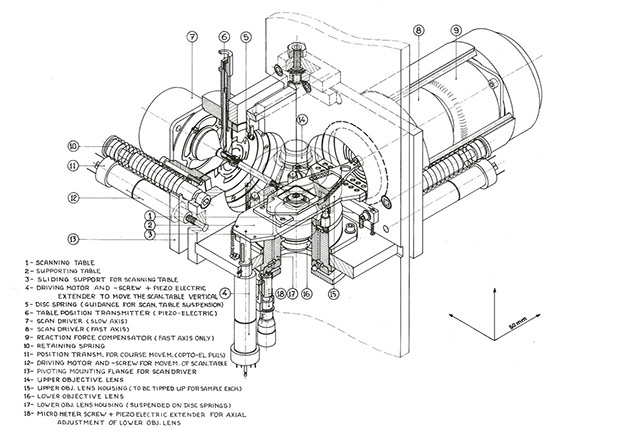
Opinion: Archives for Science
Archivists help make scientific material available for future researchers. By contributing original material to the EMBL Archive, you can contribute to building this resource for future generations

By Anne-Flore Laloë, EMBL’s Archivist
In a 2007 letter published in Nature, biologists Sydney Brenner and Richard J. Roberts addressed the importance of scientific archives. To their fellow molecular biologists, they implored, “Let’s not wait until memories have faded and papers been discarded at the end of a career before deciding to save our heritage.”
The legacy in danger of being lost is not the published record, which is preserved by libraries, but the unique material that complements it: laboratory notebooks, email exchanges and prototype instruments, to name a few. By telling the stories behind the science, the archival record reveals a glimpse into the past and, in turn, evidence of how science is carried out.
Having heeded Brenner and Roberts’ advice, and through the initiative of the board of the EMBL Alumni Association, EMBL founded its archive in 2015 to capture, preserve and share EMBL’s achievements in life sciences and its institutional heritage. By preserving the stories behind the science, the archival record reveals a glimpse into the past and, in turn, evidence of how science is carried out. Furthermore, given EMBL’s central role in European science, the Archive’s holdings bear witness to the ongoing story of European molecular biology.
Preserving the scientific heritage
The advancement of science thrives on exchange of ideas and communication, such as emails, letters or field notebooks. When made accessible through archives, these digital and analogue communications become part of a heritage valuable to future scientists, historians and other scholars seeking to understand scientific discoveries.
The EMBL Archive holdings include scientific and administrative documents spanning the Laboratory’s lifetime, including prototype instruments and blueprints from EMBL’s instrumentation workshops, photographs from scientific and social events and lecture slides from training courses. Overall, the EMBL Archive documents the day-to-day life of carrying out molecular biology research in an international institution that has been a major protagonist in the story of the field for more than four decades.
To make such material available in the long term, archivists carry out a number of tasks to ensure the accessibility of material.
Cataloguing and Providing Context
The creation of a catalogue is a multi-layered activity – one that must take into account the past, the present and the future. Archivists preserve the context of records by showing how they were ordered and used by their creator in the past. Catalogues are also rooted in the present – they reflect the structures, standards and terminology of a specific point in time. And of course, a catalogue is destined to be used over long periods of time. Therefore, another key feature of catalogues is that they must ensure earlier material remains findable, even when subject names or science methods change over time.
Archivists also must create and control relationships between material to enable researchers to effectively locate archival resources. Entering ‘microscopy’ into the Europeana catalogue, the European platform for cultural and scientific heritage, yields nearly two thousand entries to relevant archival material like photos, papers and illustrations. Each entry provides further information and archival resources from one of more than 3,000 contributing institutions. In due course, the EMBL Archive will share its catalogue entries with Europeana – including those in the area of microscopy – through the platform, thereby placing them in the context of European scientific heritage. At the same time, EMBL’s own archive catalogue, which will be unveiled in 2018, will present EMBL’s documentary heritage in the context of the Laboratory’s activities and history and enable users to access scientific and institutional material.
Platforms like Europeana and online catalogues put archival material in the context of collections, institutions and topics. As such, the archivist’s task of providing context to collections is one of collaboration, thinking beyond single subject areas and enriching archival discovery tools. The EMBL Archive therefore works closely with archivists across Europe, in other scientific organisations and research organisations, to make sure that EMBL’s archival holdings are connected to other pertinent collections and that all kinds of users can find them.
Conclusion
It is easy to say that that science is only about the future and that the past can be left behind. However the archives of science complement the published record by providing unique insights into the sequence of events between individuals, across institutions and beyond. Today’s science is international and collaborative, its technologies and methods are developing quickly along with the tools used to communicate it. By working together, archivists, scientists and administrators can build long-term resources for future generations of researchers and make accessible the stories of science.
This article is based on a longer piece presented in EMBO Reports.


